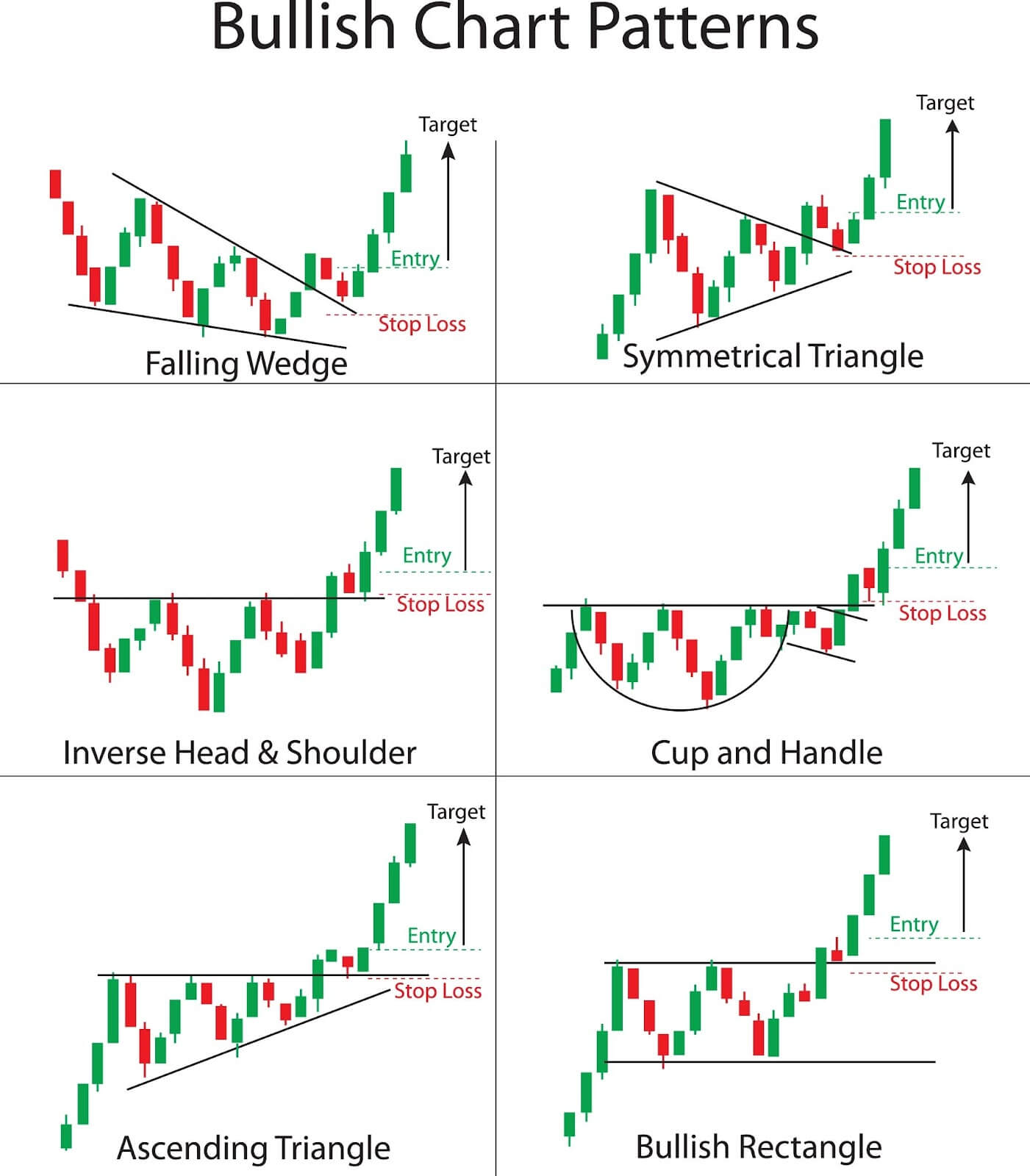TradingKey - Understanding what a pattern "looks like" is just the beginning; the real key lies in interpreting the trading signals behind the patterns: When should you decisively enter a trade? Where should you set your stop-loss to avoid getting knocked out? How can you determine if a breakout is genuine?
The previous sections explained the main chart patterns and their basic principles. Next, we will learn how to identify trading signals based on these chart patterns and optimize our strategies.
.jpg)

(Source: Shutterstock)
How to Identify the Head and Shoulders Top Pattern?
The head-and-shoulders pattern consists of two types: head and shoulders top and head and shoulders bottom. Here, we will focus solely on the head and shoulders top.
Volume Variation Patterns
The changes in volume during the formation of a head and shoulders top can reveal the strength of both sides in the market.
When forming the left shoulder, the market is in an uptrend, with bulls feeling confident about future movements. As traders rush in, volume surges like an athlete just starting a race, breathing increasingly heavily.
As prices rise to form the head, although it reaches a new high, volume starts to taper off as if an athlete is halfway through their run, struggling to maintain high levels seen during the left shoulder; it may even decline further.
During the right shoulder phase, volume continues to shrink; it's as if our athlete has become exhausted while bears quietly gather strength on the sidelines, preparing for an attack.
If the volume does not follow this expected pattern—such as having higher volume at the head than at the left shoulder—the reliability of that head and shoulders top diminishes significantly.
Trading Signals: Breaking Below the Neckline
When the price decisively breaks below the neckline, it sends a strong sell signal for the head and shoulders pattern, and you must react immediately to adjust your strategy.
Once the breakdown is confirmed, if you hold long positions, it's time to sell quickly to avoid greater losses. For experienced and risk-tolerant investors, this can also be an opportunity to open short positions for profit.
How to Set Stop-Loss Orders?
In a head and shoulders top pattern, there are specific rules for setting stop-loss orders.
Setting your stop-loss above the peak of the right shoulder is a reliable approach.
If the price breaks below the neckline and then rebound back above the right shoulder's peak, it could indicate that the head and shoulders pattern has failed, suggesting that the market may return to an uptrend; timely stop losses can help minimize losses.
You can also estimate a downward price target based on the height of the head and shoulders pattern.
Measure the vertical distance from the top of the head to the neckline, then project that same distance downward from where it broke below the neckline.
However, this is just a reference as actual market conditions are influenced by various factors.
How to Identify the Double Bottom Pattern?
Here we will focus solely on double bottoms.
Focus on Volume and Time
First Dip (First Bottom): Imagine you're in a supermarket seeing flash sales; frantic buying leaves shelves empty—the volume at this first bottom resembles this situation.
Second Dip (Second Bottom): When prices decline again, you notice that discounts are still available but fewer people are buying—the volume at this second bottom shrinks to 60% of that at the first bottom, indicating that panic selling has exhausted itself.
Jumping Off Point: Just like a spring requires power to spring upward, when price breaks through its neckline, trading volume needs to "explode."
When prices break above their neckline with significant volume increases, it serves as an important confirmation of the double bottom pattern’s validity.
This indicates that bullish forces in the market have firmly taken control as substantial buy orders flood in, driving prices higher continuously.
Additionally, it's essential to pay attention to how much time elapsed between forming both bottoms. Generally speaking, longer time intervals increase reliability for double-bottom patterns.
This is because longer intervals imply that there has been enough time for markets to digest earlier downward pressure and adjust market sentiment, thus making both bottoms more solid.
What Are the Trading Opportunities and Risk Management Strategies for the Double Bottom Pattern?
Entry Timing: Don’t wait for the spring to fully bounce back before entering! You should enter when the price breaks through the neckline.
However, when trading using the double bottom pattern, you need to guard against false breakouts, where the price may break above the neckline but then quickly fall back, resulting in losses for investors.
To effectively mitigate the risk of false breakouts, you can take the following measures:
To begin with, allow for a retest after the price has moved above the neckline. When the price retraces to test the neckline, if it is able to provide effective support and rises again, this increases the safety of your entry.
Second, combine other technical indicators for a comprehensive judgment. Indicators like moving averages and MACD can strengthen the reliability of double-bottom patterns when multiple indicators signal a buying opportunity.
In terms of setting stop-loss and take-profit levels, you can place your stop-loss slightly below the second bottom. This ensures that if prices fall below this double-bottom pattern and confirm a trend reversal failure, you can promptly limit your losses.
Take-profit levels can be flexibly adjusted based on your risk preferences and market conditions.
One common method is to measure the height of the double bottom pattern (the vertical distance from the bottom to the neckline) and project that same distance upward from where it broke through; this serves as an initial take-profit target.
Of course, in actual trading, investors should closely monitor market changes and timely adjust their take-profit levels according to market trends to ensure they maximize their profits.

(Source: Freepik)
How to Identify Flag Patterns?
Flag patterns are primarily divided into two types: ascending flags and descending flags, each corresponding to different market trend backgrounds.
First, flag patterns must occur after a clear and significant trend.
In an uptrend, there should be a distinct and relatively steep upward movement leading up to the formation of the flag, which acts like a flagpole laying the groundwork for the subsequent flag formation.
Similarly, in a downtrend, there should be a noticeable downward movement as a precursor.
During the consolidation phase of the flag, trading volume typically decreases since both buyers and sellers are on standby, waiting for clearer market direction.
When the price breaks through the boundaries of the flag pattern with volume doubling, that’s when the real move begins.
Generally speaking, flag patterns shouldn’t take too long or too short to form; they are commonly seen within 1-3 weeks.
How to Buy an Ascending Flag?
When the price breaks above the upper boundary of a flag pattern, it serves as a strong buy signal, indicating that you can enter decisively while also setting stop-loss orders.
For example: When EUR/AUD breaks above 1.68 (the upper boundary), you should enter promptly.
Simultaneously set your stop-loss just below 1.65 (the lower boundary) by 30 pips; if prices retreat into this zone, you can limit your losses effectively.
How to Calculate Your Target Price?
The height of the flagpole is calculated as 1.70 - 1.60 = 100 pips; then project upward from the breakout point of 1.68 by that same height to get your target price at 1.78.
How to Sell on a Descending Flag?
In contrast, when dealing with a descending flag pattern, when prices break below its lower boundary it sends out a clear sell signal indicating that the market will continue downward. At this point, sell your long positions or establish short positions to profit from further price declines.


